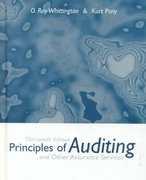
Q1 is for Submission. Solution will become available on submission. Q2 is for practice. Solution is attached (study it carefully). Q1. Peter has a newspaper stand at the commuter rail station where he daily sells the local newspaper for $0.80 each. Newspaper demand is uncertain and the distribution is: 100 papers with probability 0.6 OR 160 papers with probability 0.4 Peter buys the paper from a wholesaler before he knows the demand, for $0.30 each. Unsold papers are sold to a recycler at the end of the day for $0.05 each. To attract customers, Peter has also posted an advertisement that promises customers $0.40 in cash if they come and do not get a newspaper. There are no other costs. Required: A. Using a payoff table, compute how many papers Peter should optimally buy each morning. Peter is risk neutral. [Examine only the following two choices buy 100 or buy 160 papers. There is a mathematical theorem that says that the optimal has to be one of the demand possibilities and not something intermediate, like say 105 or 150 papers here. We will talk about the theorem in class.] Scenario (demand): probability Strategy (newspapers obtained from wholesaler) Exp. Payoff 100 newspapers 160 newspapers Peter should buy papers each morning and the resulting expected daily profit will then be $ . Then fill in the following below: The expected number of newspapers sold daily will then be Show calculation here: The expected number of newspapers recycled daily will then be Show calculation here: The expected cash payment daily to disappointed customers will then be $ Show calculation here: Q1 is for Submission. Solution will become available on submission. Q2 is for practice. Solution is attached (study it carefully). Q1. Peter has a newspaper stand at the commuter rail station where he daily sells the local newspaper for $0.80 each. Newspaper demand is uncertain and the distribution is: 100 papers with probability 0.6 OR 160 papers with probability 0.4 Peter buys the paper from a wholesaler before he knows the demand, for $0.30 each. Unsold papers are sold to a recycler at the end of the day for $0.05 each. To attract customers, Peter has also posted an advertisement that promises customers $0.40 in cash if they come and do not get a newspaper. There are no other costs. Required: A. Using a payoff table, compute how many papers Peter should optimally buy each morning. Peter is risk neutral. [Examine only the following two choices buy 100 or buy 160 papers. There is a mathematical theorem that says that the optimal has to be one of the demand possibilities and not something intermediate, like say 105 or 150 papers here. We will talk about the theorem in class.] Scenario (demand): probability Strategy (newspapers obtained from wholesaler) Exp. Payoff 100 newspapers 160 newspapers Peter should buy papers each morning and the resulting expected daily profit will then be $ . Then fill in the following below: The expected number of newspapers sold daily will then be Show calculation here: The expected number of newspapers recycled daily will then be Show calculation here: The expected cash payment daily to disappointed customers will then be $ Show calculation here







